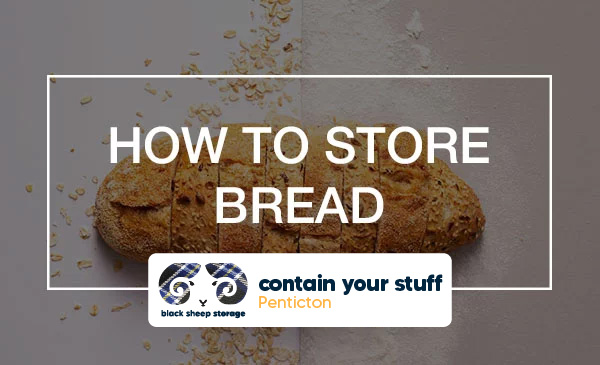Bread is a staple of any healthy eating plan. It’s delicious, nutritious and versatile. But how do you store your bread so that it doesn’t go stale before you get a chance to eat it? Here are some tips to help keep your bread fresh and tasty for as long as possible. Visit our blog for even more great storage tips.
How to Store Bread
Make sure your bread is fresh before storing it.
- Check the expiration date on your bread.
- Look for signs of mold or insect damage, especially if you’ve been storing it for a long time and have been keeping it at room temperature.
- If you notice any signs of spoilage, immediately throw out any food that’s been sitting out for more than two weeks and replace it with fresh products from your pantry or fridge–you don’t want to risk bacteria growing in your home!
Keep your bread in the fridge.
If you’re keeping your bread in the refrigerator, it’s best to keep it in an airtight container. This will prevent any moisture from getting trapped inside and causing mold growth. Bread should be stored at room temperature for no more than two days, or kept frozen for no more than six months (but really–who thinks about this?).
Wrap bread with plastic wrap and foil.
You can store your bread in a variety of ways:
- Wrap the bread with plastic wrap and foil. This will keep it fresh for about three days at room temperature, or up to four days if you put it in the freezer.
- To keep your bread fresh longer, use a bread bag (or buy one). Bread bags have their own dispenser holes so that you don’t have to cut through the top of your loaf to get at what’s inside! You can also use them for storing smaller items like cookie dough or muffins–they’re great for keeping things moist while they thaw out over time.
- If you want something even more insulated than that, try putting all kinds of goodies inside before wrapping them up tightly in plastic wrap; this way there won’t be any openings where air could escape through as quickly as possible when freezing cold temperatures start taking over during winter months.”
Keep bread out of direct sunlight.
- Don’t store baked bread in the fridge. The moisture from the dough can cause it to mold and develop mold spores, which are harmful to humans and animals. If you do find yourself with an unwanted piece of bread that’s too bad to throw away, be sure to freeze it immediately so that any bacteria doesn’t spread through your freezer. You may also want to consider storing unopened packages of sliced bread in the freezer, since this will keep them fresh for longer than just storing them at room temperature would allow.*
Store bread in an airtight container.
Store your bread in an airtight container. BPA-free plastic and glass containers are best, but you may also want to use metal, ceramic and wooden ones as well. Plastic wrap is another good option if you don’t want your bread to come into contact with air for too long (especially if it’s already been exposed to moisture). Foil is another good choice–just make sure that it’s not too close to the top of your container, since this could affect rising rates over time. You can also use waxed paper or aluminum foil as well; just make sure they’re not touching each other so they don’t stick together!
Bread is a staple food that many people eat every day, so it’s important to know how to store it so that it lasts long enough for your next meal. We recommend storing bread in the refrigerator and wrapping with plastic wrap or foil before putting it away. If you don’t have room in your fridge, then we also recommend keeping any leftover bread out of direct sunlight, so there won’t be too much moisture on the outside when you go back into storage mode again.










